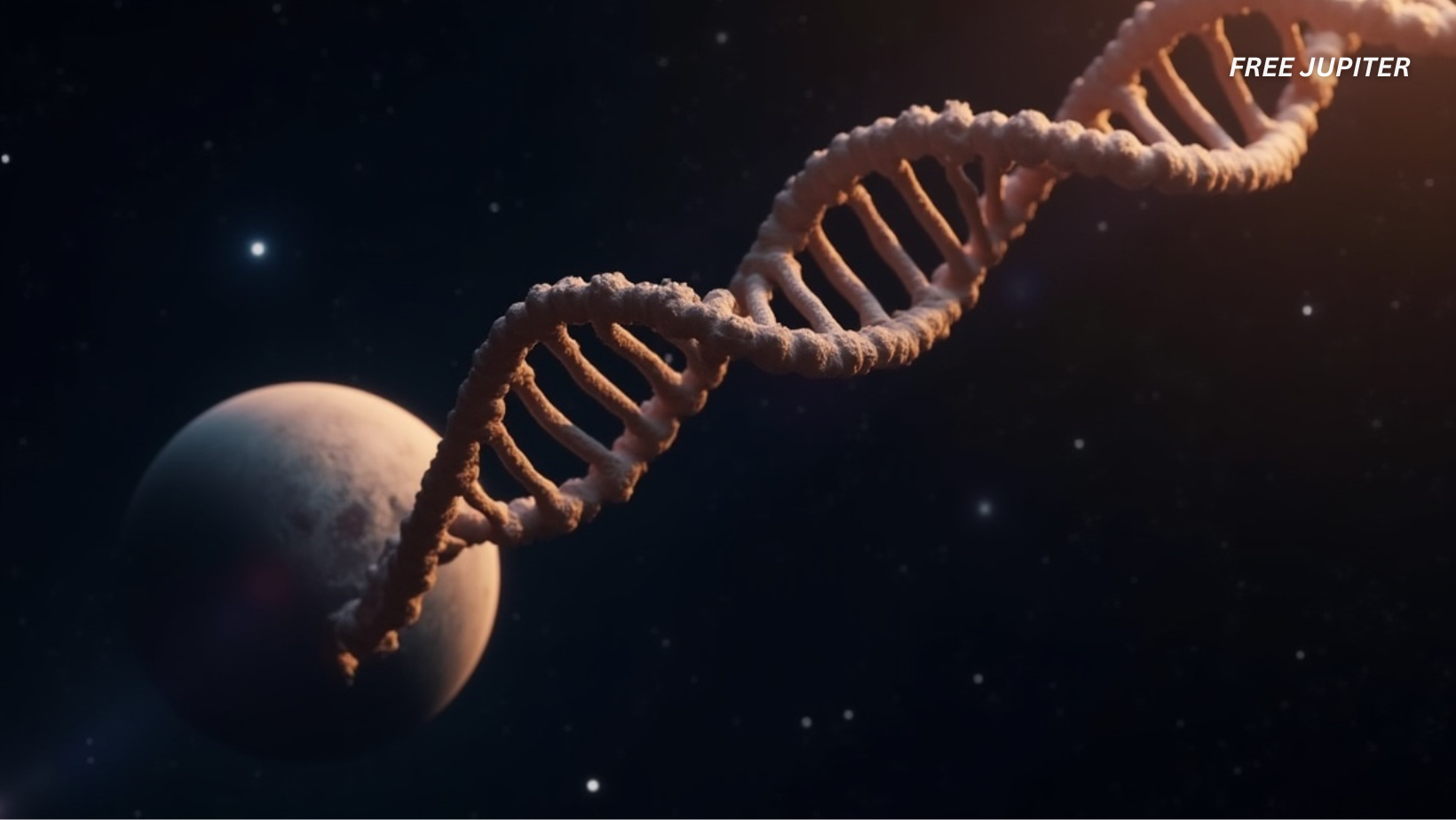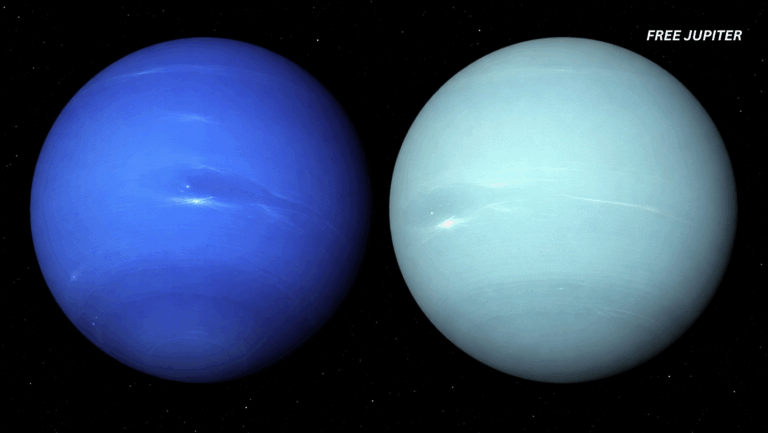Friendly Note: FreeJupiter.com shares general info for curious minds 🌟 Please fact-check all claims—and always check health matters with a professional 💙
A cosmic epic playing out in every cell of your body.
It’s easy to forget that within each of us lies a sprawling, invisible universe. We marvel at the stars and planets, we send spacecraft into deep space, and we peer through telescopes hoping to glimpse the far reaches of the cosmos. But there’s a vast and wondrous expanse right under our noses—or rather, within our cells.
Welcome to your inner cosmos, where DNA winds and folds itself like an astronomical thread, guiding the symphony of life. And here’s the kicker: if you were to unravel all of it, end to end, your DNA would be long enough to make 17 round trips from Earth to Pluto. No spaceship required—just your cells doing what they do best.
The Astounding Math of Molecular Miles
Let’s break it down. You’ve got around 37 trillion cells, and each one (with a few exceptions like red blood cells) holds about 2 meters (over 6 feet) of DNA. Stack that up cell by cell, and you’ve got a jaw-dropping 34 billion miles (55 billion kilometers) of genetic material silently operating inside you.
For context, the average distance from Earth to Pluto is about 3.67 billion miles. So yes—if your DNA took a road trip, it would travel to Pluto and back 17 times. That’s farther than any spacecraft has gone, and yet it’s all tucked neatly into your microscopic cells. Think about that the next time you feel small.
How Does All That DNA Fit? Meet Nature’s Origami
DNA’s length is only half the wonder. What truly amazes scientists is how it fits. Inside a space smaller than a pinhead, 6 feet of DNA coils and folds into an intricate three-dimensional structure. This molecular architecture is so precise that biologists compare it to origami on an atomic scale.
Dr. Brenda Davis, a Stanford cell biologist, explains, “If DNA were the width of a strand of spaghetti, it would stretch from New York to Los Angeles. Yet it folds itself perfectly into a package that fits inside a tiny cell nucleus without getting tangled.”
This isn’t just tidy packaging—it’s crucial for function. Specific genes need to be accessible when needed, and the way DNA folds affects which genes get turned on or off. It’s as if your genetic code not only holds information but also knows exactly how to file itself for efficient use.
Read more: The Bacteria In Your Gut May Cause Depression, Not The Brain, Claims New Study
Spring Cleaning Inside You: A Season of Renewal
While flowers bloom outside in May, something similar is happening inside. Your body is constantly replacing old cells with new ones—billions per day. And each time this happens, your DNA must copy itself with incredible accuracy to pass along your genetic instructions.
DNA replication is like photocopying an encyclopedia without a typo—trillions of times over. Sometimes mistakes happen (hello, mutations), but your cells have proofreading and repair systems that catch most of them. It’s a never-ending biological ballet that keeps you alive.
Beyond Biology: DNA as the Blueprint for the Future
Here’s where things get really exciting. Scientists aren’t just in awe of DNA’s design—they’re trying to use it as a tool in tech and innovation. Why? Because it’s the most compact and durable way to store information we know of.
In fact, researchers have already encoded:
- An entire book,
- A movie,
- A computer virus,
- Even Shakespeare’s sonnets…
…into strands of synthetic DNA.
One landmark study by Harvard researchers showed that all of the world’s data—yes, the internet, libraries, photos, videos—could theoretically fit into a volume smaller than a sugar cube using DNA storage.
George Church, a genetic engineering pioneer, puts it simply: “DNA is incredibly stable. It can last for thousands of years and doesn’t require much space. It’s a natural hard drive.”
Read more: Memories Found To Be Stored Throughout The Body, Not Just The Brain, Says Study
3D Genome Mapping: How the Folding of DNA Shapes Your Health, One Twist at a Time
There’s a high-tech cartographer at work inside your body—but it doesn’t draw maps of countries or planets. It charts the invisible universe inside your cells, where DNA isn’t just a string of code, but a complex, multidimensional structure curled up with cosmic precision.
Welcome to the world of 3D genome mapping, where scientists are learning that how your DNA folds may be just as important as what it says.
Not Just a Code—A 3D Blueprint
We often picture DNA as that classic spiral staircase—two strands twisted like a double helix. That’s true on a basic level, but zoom into your cell’s nucleus and you’ll find something far more intricate.
Inside each nucleus, about 6 feet of DNA has to be packed into a space that’s only a few micrometers wide. But it’s not just shoved in like laundry in a suitcase. It’s folded strategically. This three-dimensional folding pattern determines which parts of your DNA are accessible and which are tucked away.
Think of your genome as a pop-up book: the folds, flaps, and layers influence what’s visible on the page. And what’s visible determines which genes are turned on or off.
Gene Control Through Folding
Here’s the twist (literally): genes don’t float around randomly. Instead, they’re brought into contact with specific areas called enhancers—genetic switches that boost or silence their activity. These interactions aren’t based on linear distance, but spatial proximity.
So even if two genes are thousands of letters apart on the DNA strand, they can be brought close together by folding, allowing them to interact. This is how your body knows when to make insulin, grow hair, heal wounds, or fight infections—all thanks to careful folding.
If this folding goes wrong? Well, it’s like misplacing a page in that pop-up book. Suddenly, genes that should be quiet get switched on, and those that should be active fall silent.
This misfolding can trigger diseases, including certain types of cancer, developmental disorders, and even autoimmune conditions.
A New Era of Biological Cartography
To understand this complex origami, scientists needed more than microscopes. Enter 3D genome mapping—a cutting-edge approach that uses high-resolution imaging, sequencing data, and artificial intelligence to visualize how DNA folds and loops in real time.
One leading technique is called Hi-C sequencing, which detects which parts of the genome are physically close together, regardless of their linear distance. The data then gets fed into AI-powered models to create a kind of spatial map of your genome—almost like Google Maps, but for chromosomes.
This isn’t just a scientific flex. These maps help researchers identify where things go wrong in diseases, and how to fix them. For example:
- In cancer cells, 3D genome maps can show where gene enhancers are hijacked, turning healthy cells into rogue ones.
- In neurological disorders, these maps reveal how brain-related genes get silenced due to folding errors.
- In aging research, they’re helping us understand how DNA folding patterns shift over time—and what that means for cellular decline.
Read more: Adversity In Childhood Has Been Linked to Accelerated Brain Development
The Future of Precision Medicine
The implications of 3D genome mapping go far beyond basic science. They’re reshaping how we think about medicine.
Imagine treatments that don’t just target genes, but correct the way those genes are folded—restoring healthy function without changing the underlying DNA sequence. This approach could revolutionize how we treat complex conditions like Alzheimer’s, lupus, or certain genetic cancers.
And it’s not all theory. Early-stage therapies are being explored that use epigenetic editing tools—think of them as genome folding tweezers—to reshape DNA’s structure and reprogram cell behavior.










